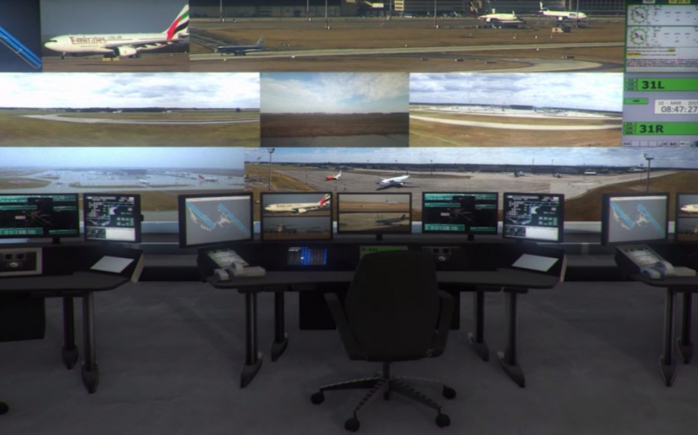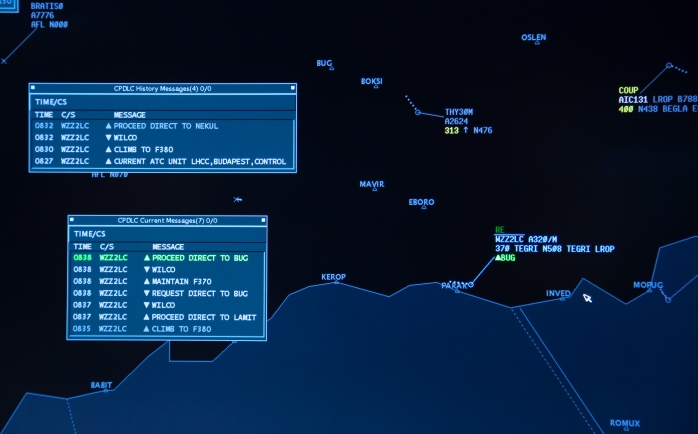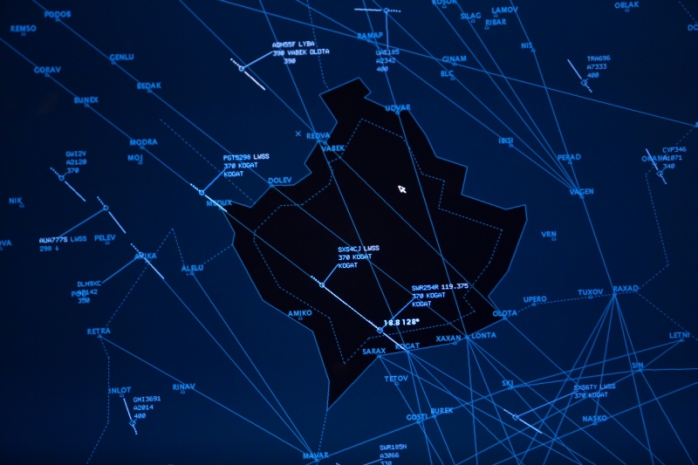HungaroControl: Air Navigation Services & More at the World ATM Congress 2016 in Madrid
Hungary’s air navigation service provider HungaroControl, with its research and development unit CRDS, will showcase its innovative technologies at the World ATM Congress in Madrid. Let us inspire you at Booth no. 1216 on March 8-10, 2016!
Thanks to its continuous innovation activities, HungaroControl is one of the key players in Europe regarding flight safety improvements, capacity increase, reduction of airline costs and enhanced environmental protection. To this end, the Hungarian ANSP focuses primarily on developments that improve the efficiency of air traffic management, as well as the introduction of up-to-date technologies – in partnership with other ANSPs, universities and technology providers (including its participation in the SESAR research and development programme) as well as on its own.
HungaroControl’s Centre of Research, Development and Simulation (CRDS) plays an important role in HungaroControl’s innovation efforts. Operating Central Europe’s largest ATC simulation facility, CRDS not only supports HungaroControl but also offers validation-based solutions to other ANSPs. With the help of fast-time and real-time simulations, CRDS’ validation methodology helps maximise benefits in terms of capacity, efficiency and the environment – and minimise safety-related risks.
A Commitment to Facilitate Free Route Airspace in Europe
Following 5 February 2015, HungaroControl, the Hungarian air navigation service provider (ANSP) was first in Europe to abolish the entire fixed flight route network, thus enabling airplanes to use the airspace freely, without any restrictions. The significance of the new traffic management concept (Hungarian Free Route Airspace, HUFRA) is that airplanes can take the shortest possible flight path between the entry and exit points in Hungary’s airspace. According to estimates, this solution may result in potential yearly savings of 1.5 million kilometres by aircraft flying over Hungary. As a result, airlines may save nearly USD 3 million worth of fuel per year, which may also lead to a reduction of CO2 emissions by more than 16 million kilogrammes. Since HUFRA’s introduction, HungaroControl’s safety performance has been maintained despite the 13% traffic growth in 2015. Also, many airlines previously circumnavigating the Hungarian airspace due to the lack of appropriate routes now fly via Hungary, taking advantage of the benefits of HUFRA.

In order to maximise benefits for airspace users, HungaroControl continues to work with other ANSPs and Functional Airspace Blocks (FABs) to remove restrictions to free airspace use even before the EU deadline of January 2022. Examples of these efforts include the Night Free Route Airspace Budapest/Bucharest (N-FRAB) between Hungary and Romania as of August 2015, the introduction of 47 plannable direct routes on the northwest-southeast axis between the United Kingdom and Hungary as of December 2015, as well as technological preparations to create Free Route Airspace between the Black Forest and the Black Sea (i.e. Germany and Romania), to be completed in 2017.

Remote Tower: A New Approach
HungaroControl is making intensive efforts towards the implementation of the remote control tower that aims to enable ANSPs to control airport traffic from their own buildings with the help of a virtual surface. HungaroControl’s remote tower concept has achieved considerable success on the international market: the emergency control centre at the Dubai International Airport (DXB) is being implemented according to the proposals of a consortium of five companies, including HungaroControl.
HungaroControl’s concept is built on integrating its existing ground surveillance system with a network of distributed cameras, aiming to enhance not only situational awareness but also safety levels. The company aims to operate a remote contingency tower in Budapest in 2017 and a full-time remote tower as of 2018. Although the Budapest airport will not be the world’s first remotely controlled airport, it will be the first of its size and complexity, with nearly 90,000 movements per year.

CPDLC Introduction Three Years Ahead of the EU Deadline
HungaroControl introduced CPDLC (Controller Pilot Data Link Communication) in November 2015, three years ahead of the EU deadline. The new feature enables data interchange between pilots and air traffic controllers in the form of text messages, and is expected to further improve flight safety and increase the capacity of Hungarian airspace by optimising the use of radio frequencies. Also in this case, CRDS was instrumental in the preparations to the introduction of CPDLC, including HMI design, concept validation and the subsequent training of controllers.

Multiple Cross-Border Remote Operations: The KFOR Project
One of the prominent results of HungaroControl’s efforts was the re-opening of the upper airspace over Kosovo (KFOR sector) in 2014. Thanks to this achievement, the last white spot was cleared from the map of the European airspace, contributing to the normalisation of aviation in South-East Europe. Based on EUROCONTROL data, the re-opening enables shorter routes and consequently a reduction of ca. 24,000 tonnes in annual fuel consumption, saving airlines nearly 18 million euros per annum. The Kosovo project demonstrated HungaroControl’s capability of multiple cross-border operations.

Continuous Descent Made Easier: The MergeStrip Tool
In order to facilitate continuous descent approach, HungaroControl developed MergeStrip, a simple yet ingenious new air traffic planning concept, which helps air traffic controllers schedule arriving traffic in a more efficient way, reducing fuel burn, CO2 emissions and also the noise load on the population near airports.
MergeStrip allocates the aircraft preparing to land at a specific airport to a "number line" by considering their actual position and speed. Based upon the calculations performed by the program, controllers can easily and quickly identify the preliminary interventions required to carry out the landing operation continuously and in the right schedule. The procedure assists air traffic controllers in efficient planning, so their work flow becomes more predictable. Since its introduction, MergeStrip has earned praise from airlines and significant interest from other ANSPs in and outside Europe.

The related technologies will be presented at the HungaroControl booth (no. 1216) at the World ATM Congress.
If you want to learn more about HungaroControl, please click here. If you are interested in CRDS, HungaroControl’s research, development and simulation centre, please visit this page. If you are eager to know more about basic training for air traffic controllers, please click here.



